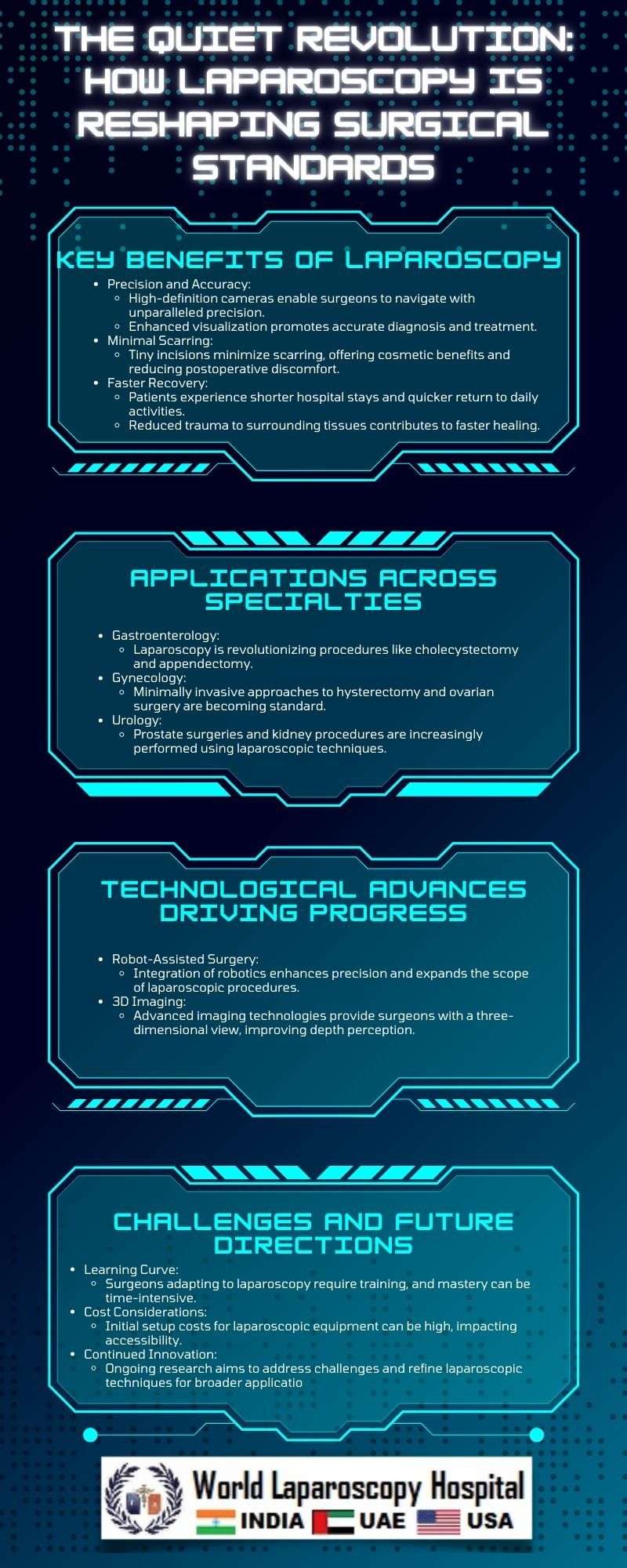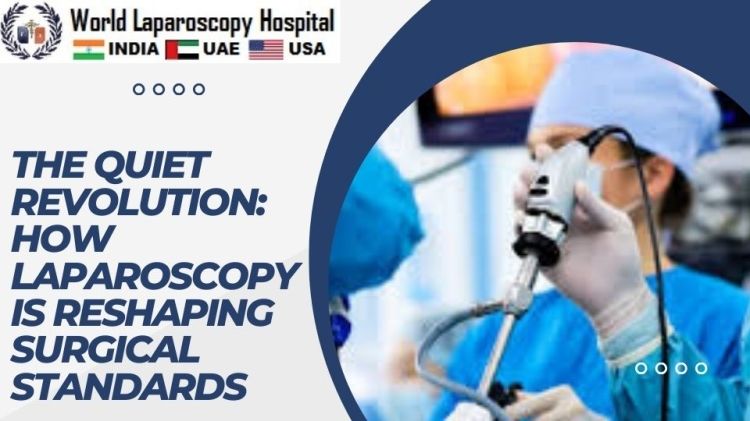Introduction
In the vast realm of medical advancements, one revolutionary technique has quietly transformed the landscape of surgery—laparoscopy. This minimally invasive approach, also known as keyhole surgery, has been making waves in the medical community, reshaping traditional surgical standards and offering a new paradigm for patient care. In this comprehensive exploration, we delve into the history, techniques, benefits, and future implications of laparoscopy, uncovering the subtle yet profound ways it is altering the face of modern surgery.

A Glimpse into Laparoscopy's Past
To understand the impact of laparoscopy on surgical standards, we must first journey back to its origins. The concept of minimally invasive surgery dates back to the early 20th century, with the introduction of rudimentary endoscopes. However, it wasn't until the 1980s that laparoscopy truly came into its own, with advancements in optics, instrumentation, and technology.
The Technique Unveiled: How Laparoscopy Differs from Conventional Surgery
At its core, laparoscopy deviates from traditional surgery by employing small incisions through which a camera and specialized instruments are introduced into the body. This stark departure from the large incisions required in open surgery represents a fundamental shift in approach. Surgeons navigate and visualize the internal organs through real-time imaging on a monitor, allowing for precision and accuracy in even the most intricate procedures.
Advantages of Laparoscopy: A Patient-Centric Approach
The transformative power of laparoscopy lies in its numerous advantages, not only for surgeons but, more importantly, for patients. Reduced scarring, shorter recovery times, and diminished postoperative pain are just a few of the benefits that have elevated laparoscopy to the forefront of surgical practices. This patient-centric approach has proven especially valuable in an era where minimizing trauma and optimizing recovery have become paramount in healthcare.
Laparoscopy Across Specialties: From Gastroenterology to Gynecology
The versatility of laparoscopy transcends medical specialties. In gastroenterology, it has become the standard for procedures like cholecystectomy and appendectomy. Gynecologists utilize laparoscopy for hysterectomies and ovarian surgeries, further reducing the invasiveness of these interventions. The adoption of laparoscopy in various specialties underscores its adaptability and underscores its potential to redefine surgical norms across the medical spectrum.
Overcoming Challenges: Technical Mastery and Learning Curves
While laparoscopy offers a myriad of benefits, it is not without its challenges. Surgeons must undergo extensive training to master the technique, navigating a steep learning curve to achieve proficiency. The dexterity required for precise movements within confined spaces demands a level of technical skill that distinguishes laparoscopic surgeons. Overcoming these challenges is crucial to unlocking the full potential of this revolutionary approach.
The Economic Impact: Cost-Effectiveness and Resource Optimization
Beyond its clinical advantages, laparoscopy has demonstrated economic benefits that cannot be overlooked. Shorter hospital stays, reduced need for pain medication, and quicker return to work contribute to the cost-effectiveness of laparoscopic procedures. Additionally, the decreased incidence of postoperative complications and readmissions translates into resource optimization for healthcare systems, making laparoscopy an attractive option from both a medical and financial standpoint.
Future Horizons: Robotics, Artificial Intelligence, and Beyond
As technology continues to evolve, the future of laparoscopy holds exciting possibilities. The integration of robotics into laparoscopic procedures promises enhanced precision and expanded capabilities. Artificial intelligence may play a role in image recognition and decision support, further augmenting the surgeon's skillset. These advancements open doors to even greater refinement in patient outcomes and pave the way for the next chapter in the evolution of minimally invasive surgery.
Conclusion
In conclusion, the quiet revolution of laparoscopy is reshaping surgical standards with a subtlety that belies its profound impact. From its humble beginnings to its widespread adoption across medical specialties, laparoscopy has emerged as a cornerstone of modern surgery. As technical mastery grows and technology continues to advance, the transformative power of laparoscopy is set to reverberate even more loudly through the halls of healthcare, ensuring a future where patient-centered, minimally invasive approaches become the gold standard in surgical care.
